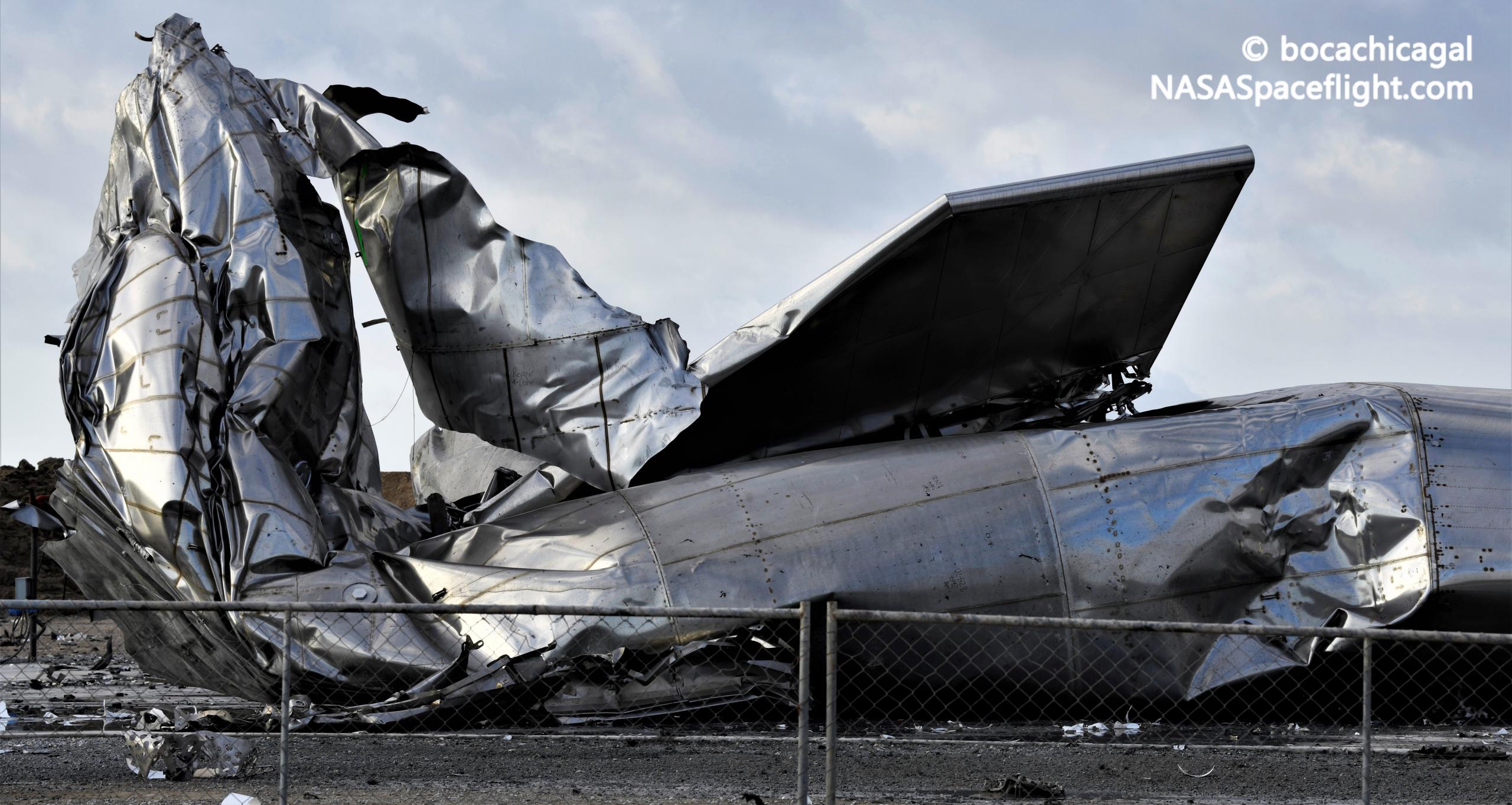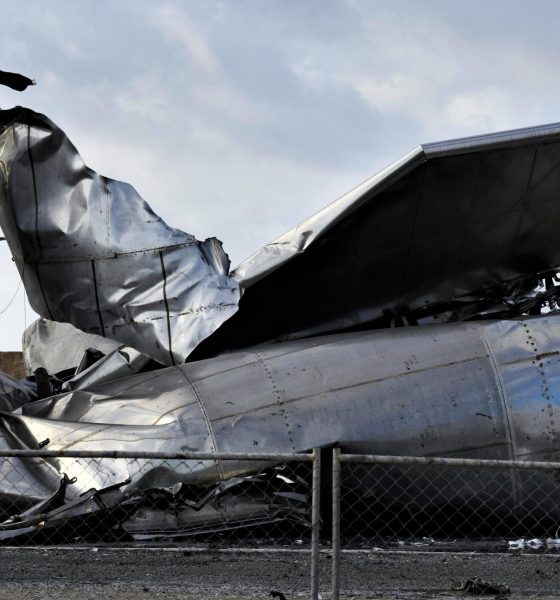

News
Here’s why SpaceX’s latest Starship rocket exploded after touchdown
In what has become a bit of a tradition, CEO Elon Musk has taken to Twitter again to explain the outcome of SpaceX’s latest Starship launch and landing attempt in more detail.
This time around, Musk’s debriefing comes after Starship serial number 10 (SN10) briefly became the first prototype of its kind to land in one piece – an extremely encouraging milestone for SpaceX. Less than 15 minutes later, though, an uncontrolled fire somehow breached the rocket’s stainless steel propellant tanks, resulting in a violent depressurization and explosion that tore Starship SN10 to pieces.
SN10’s momentarily successful landing came less than 30 days after Starship SN9’s own launch and landing attempt, which debuted a quick-fix design change meant to sidestep a different issue that caused Starship SN8 to fail shortly before touchdown last December. As it turns out, that design change – which SN9 never really had the chance to test – may have been Starship SN10’s downfall.
Starships must perform highly unusual maneuvers during their skydiver-style approach to atmospheric descent and the aggressive flip required to transition from that belly-down attitude into a propulsive vertical landing configuration. To enable those acrobatics, Starships need secondary ‘header’ tanks that permit the high-pressure storage of landing propellant.
Instead of having to maintain Starship’s building-sized main tanks at high pressures, header tanks make it far easier to safely store and feed propellant to Raptor engines. Most importantly, they help avoid prevent fuel flow interruptions or bubbles that can easily damage or destroy high-performance liquid rocket engines like Starship’s Raptors.
After Starship SN8’s last-second landing failure on December 8th, SpaceX concluded that low pressure in the liquid methane header tank was largely to blame. Normally pressurized with methane gas in a cutting-edge process called autogenous pressurization, SpaceX ultimately seemed to think that that process was the root cause and responded by adding an alternative helium pressurization workaround at the last second. Long-term, helium is not a viable solution as it’s virtually impossible to resupply in-situ (on the fly), meaning that any Starships reliant upon helium would find themselves stranded on the Moon or Mars.
Starship SN9 ultimately failed a few seconds earlier than Starship SN8 when one of its Raptor engines failed to ignite, precluding a true flight test of the helium pressurization fix. As it turns out, Musk believes that that very fix may have doomed Starship SN10.
As Starship SN10 forged ahead past the points of failure that killed SN8 and SN9, the SpaceX CEO thinks that one or more of the vehicle’s three Raptor engines began to ingest some of that helium pressurant as they emptied their methane header tank. As a result, engine thrust would have dropped below expected values, preventing Starship SN10 from slowing down for a truly soft landing. Instead, the Starship hit the ground traveling a solid 25 mph (~10 m/s), obliterating its tiny landing legs and damaging its skirt section.
It’s unclear if that hard landing was the sole cause of SN10’s subsequent explosion, as both official and unofficial webcasts of the launch appear to show a major fire starting well before touchdown and continuing to burn up to the point of failure. Regardless, Musk says that “multiple fixes” are in work for Starship SN11, which is currently speeding towards a launch attempt as early as next week. It remains to be seen if those planned “fixes” will delay SN11’s launch plans.

News
Tesla FSD fleet is nearing 7 billion total miles, including 2.5 billion city miles
As can be seen on Tesla’s official FSD webpage, vehicles equipped with the system have now navigated over 6.99 billion miles.

Tesla’s Full Self-Driving (Supervised) fleet is closing in on almost 7 billion total miles driven, as per data posted by the company on its official FSD webpage.
These figures hint at the massive scale of data fueling Tesla’s rapid FSD improvements, which have been quite notable as of late.
FSD mileage milestones
As can be seen on Tesla’s official FSD webpage, vehicles equipped with the system have now navigated over 6.99 billion miles. Tesla owner and avid FSD tester Whole Mars Catalog also shared a screenshot indicating that from the nearly 7 billion miles traveled by the FSD fleet, more than 2.5 billion miles were driven inside cities.
City miles are particularly valuable for complex urban scenarios like unprotected turns, pedestrian interactions, and traffic lights. This is also the difference-maker for FSD, as only complex solutions, such as Waymo’s self-driving taxis, operate similarly on inner-city streets. And even then, incidents such as the San Francisco blackouts have proven challenging for sensor-rich vehicles like Waymos.
Tesla’s data edge
Tesla has a number of advantages in the autonomous vehicle sector, one of which is the size of its fleet and the number of vehicles training FSD on real-world roads. Tesla’s nearly 7 billion FSD miles then allow the company to roll out updates that make its vehicles behave like they are being driven by experienced drivers, even if they are operating on their own.
So notable are Tesla’s improvements to FSD that NVIDIA Director of Robotics Jim Fan, after experiencing FSD v14, noted that the system is the first AI that passes what he described as a “Physical Turing Test.”
“Despite knowing exactly how robot learning works, I still find it magical watching the steering wheel turn by itself. First it feels surreal, next it becomes routine. Then, like the smartphone, taking it away actively hurts. This is how humanity gets rewired and glued to god-like technologies,” Fan wrote in a post on X.
News
Tesla starts showing how FSD will change lives in Europe
Local officials tested the system on narrow country roads and were impressed by FSD’s smooth, human-like driving, with some calling the service a game-changer for everyday life in areas that are far from urban centers.

Tesla has launched Europe’s first public shuttle service using Full Self-Driving (Supervised) in the rural Eifelkreis Bitburg-Prüm region of Germany, demonstrating how the technology can restore independence and mobility for people who struggle with limited transport options.
Local officials tested the system on narrow country roads and were impressed by FSD’s smooth, human-like driving, with some calling the service a game-changer for everyday life in areas that are far from urban centers.
Officials see real impact on rural residents
Arzfeld Mayor Johannes Kuhl and District Administrator Andreas Kruppert personally tested the Tesla shuttle service. This allowed them to see just how well FSD navigated winding lanes and rural roads confidently. Kruppert said, “Autonomous driving sounds like science fiction to many, but we simply see here that it works totally well in rural regions too.” Kuhl, for his part, also noted that FSD “feels like a very experienced driver.”
The pilot complements the area’s “Citizen Bus” program, which provides on-demand rides for elderly residents who can no longer drive themselves. Tesla Europe shared a video of a demonstration of the service, highlighting how FSD gives people their freedom back, even in places where public transport is not as prevalent.
What the Ministry for Economic Affairs and Transport says
Rhineland-Palatinate’s Minister Daniela Schmitt supported the project, praising the collaboration that made this “first of its kind in Europe” possible. As per the ministry, the rural rollout for the service shows FSD’s potential beyond major cities, and it delivers tangible benefits like grocery runs, doctor visits, and social connections for isolated residents.
“Reliable and flexible mobility is especially vital in rural areas. With the launch of a shuttle service using self-driving vehicles (FSD supervised) by Tesla in the Eifelkreis Bitburg-Prüm, an innovative pilot project is now getting underway that complements local community bus services. It is the first project of its kind in Europe.
“The result is a real gain for rural mobility: greater accessibility, more flexibility and tangible benefits for everyday life. A strong signal for innovation, cooperation and future-oriented mobility beyond urban centers,” the ministry wrote in a LinkedIn post.
News
Tesla China quietly posts Robotaxi-related job listing
Tesla China is currently seeking a Low Voltage Electrical Engineer to work on circuit board design for the company’s autonomous vehicles.

Tesla has posted a new job listing in Shanghai explicitly tied to its Robotaxi program, fueling speculation that the company is preparing to launch its dedicated autonomous ride-hailing service in China.
As noted in the listing, Tesla China is currently seeking a Low Voltage Electrical Engineer to work on circuit board design for the company’s autonomous vehicles.
Robotaxi-specific role
The listing, which was shared on social media platform X by industry watcher @tslaming, suggested that Tesla China is looking to fill the role urgently. The job listing itself specifically mentions that the person hired for the role will be working on the Low Voltage Hardware team, which would design the circuit boards that would serve as the nervous system of the Robotaxi.
Key tasks for the role, as indicated in the job listing, include collaboration with PCB layout, firmware, mechanical, program management, and validation teams, among other responsibilities. The role is based in Shanghai.
China Robotaxi launch
China represents a massive potential market for robotaxis, with its dense urban centers and supportive policies in select cities. Tesla has limited permission to roll out FSD in the country, though despite this, its vehicles have been hailed as among the best in the market when it comes to autonomous features. So far, at least, it appears that China supports Tesla’s FSD and Robotaxi rollout.
This was hinted at in November, when Tesla brought the Cybercab to the 8th China International Import Expo (CIIE) in Shanghai, marking the first time that the autonomous two-seater was brought to the Asia-Pacific region. The vehicle, despite not having a release date in China, received a significant amount of interest among the event’s attendees.








